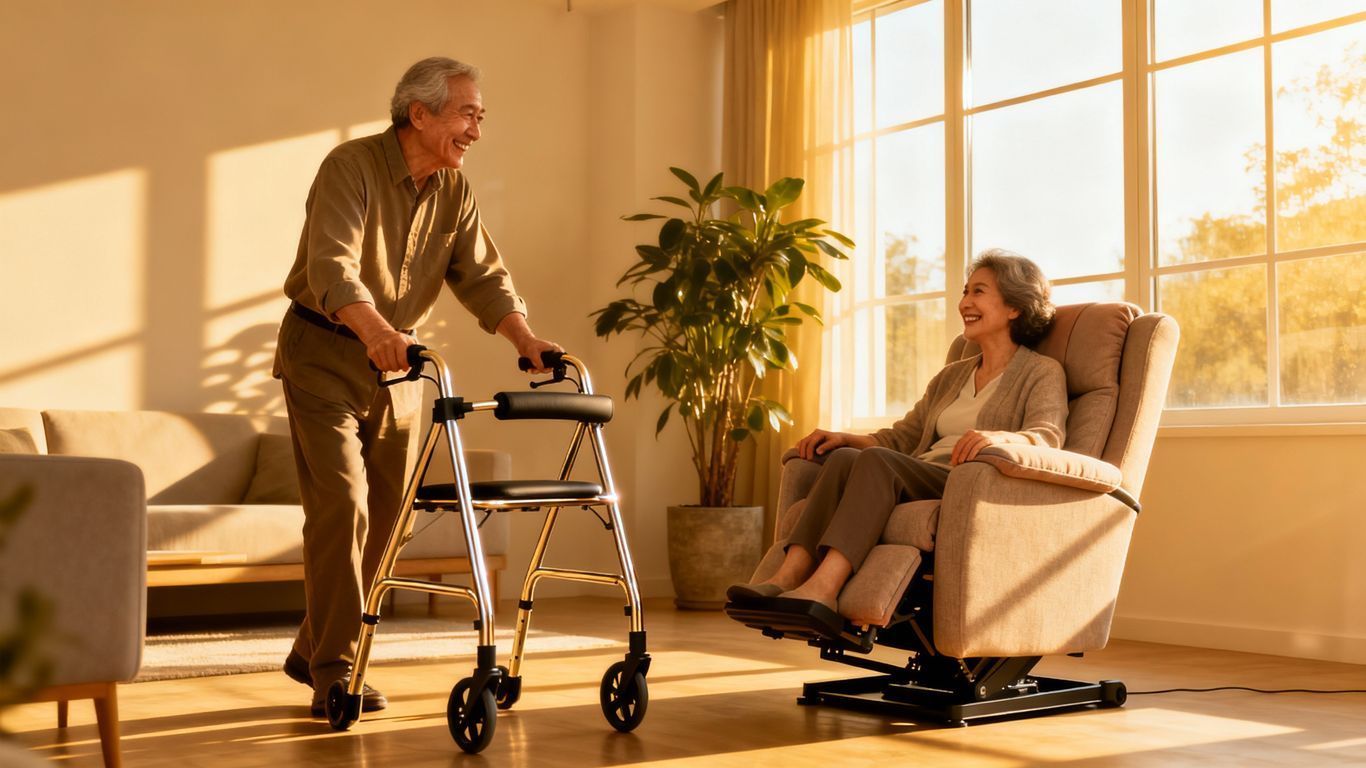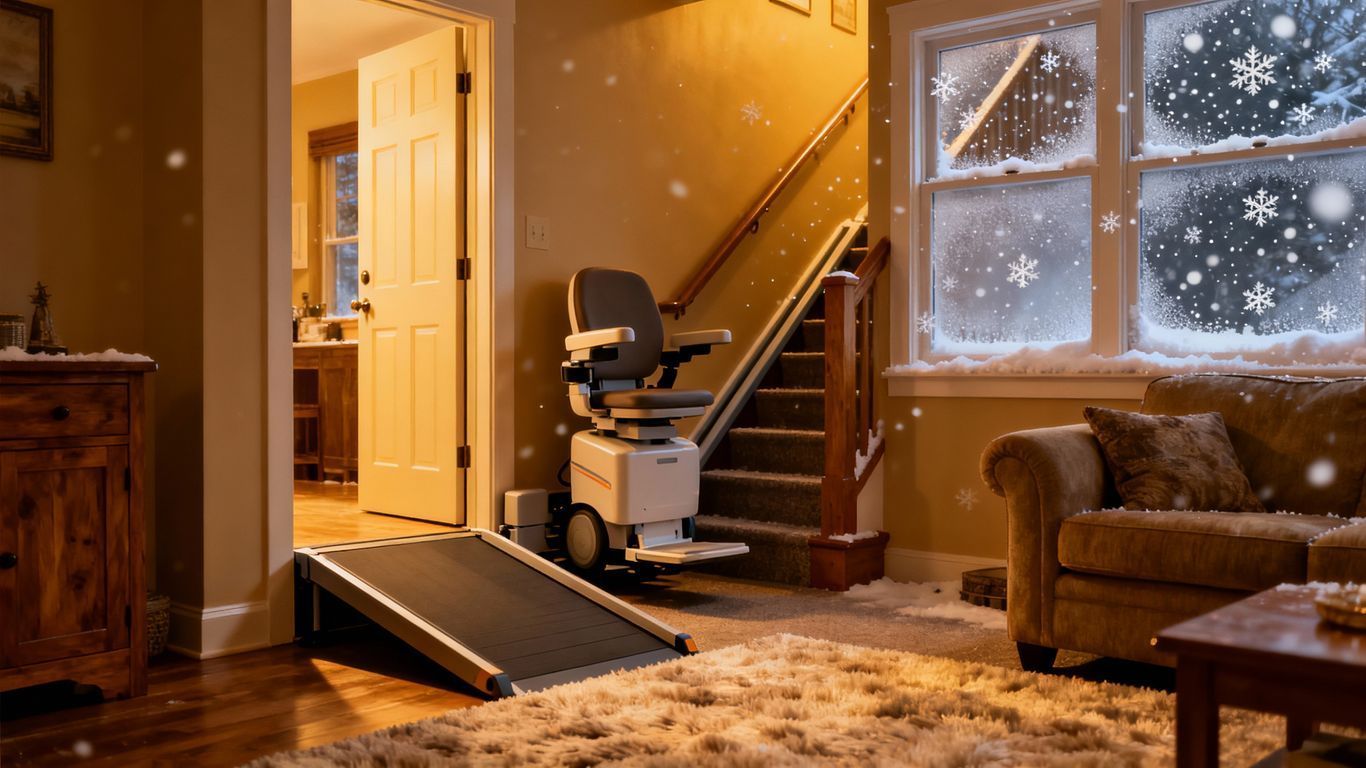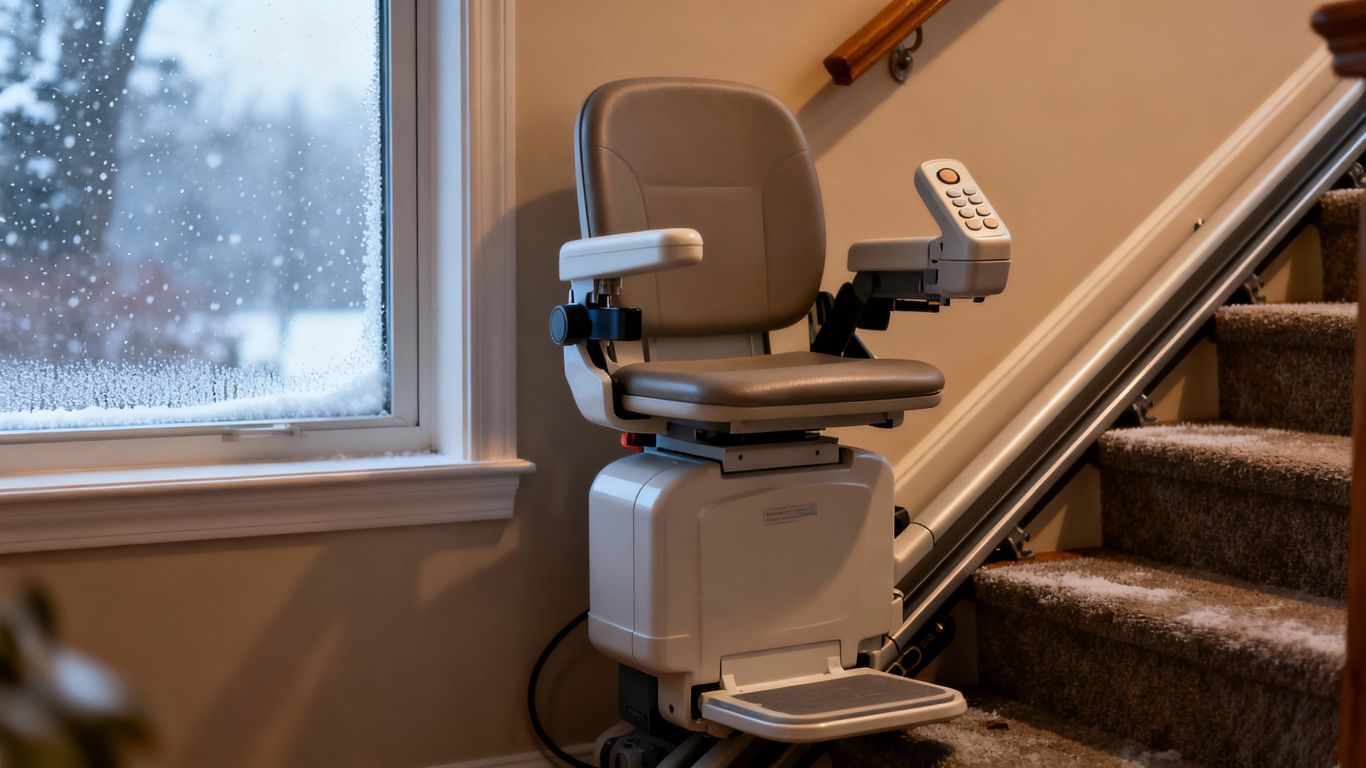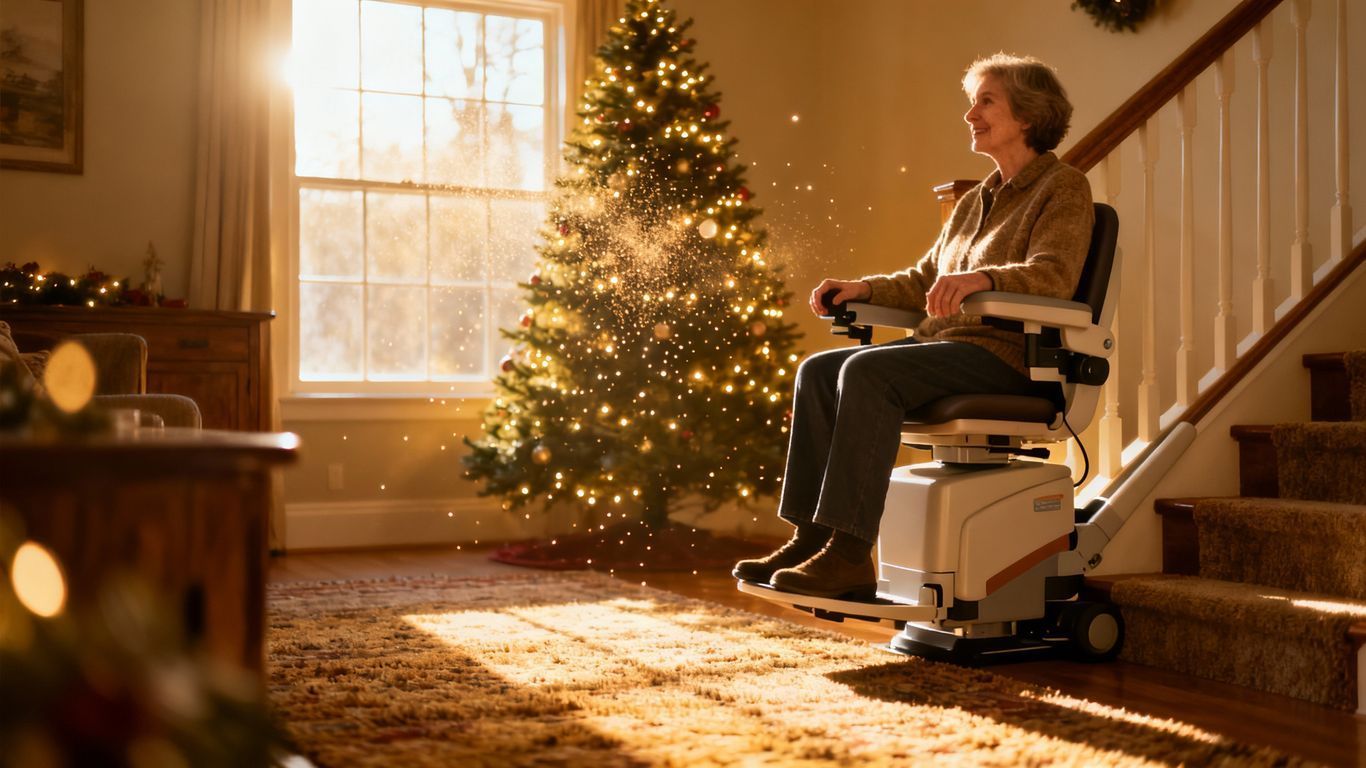The Future of Mobility Vans in 2025: How New Tech is Helping Families in North Georgia & Chattanooga Travel Easier
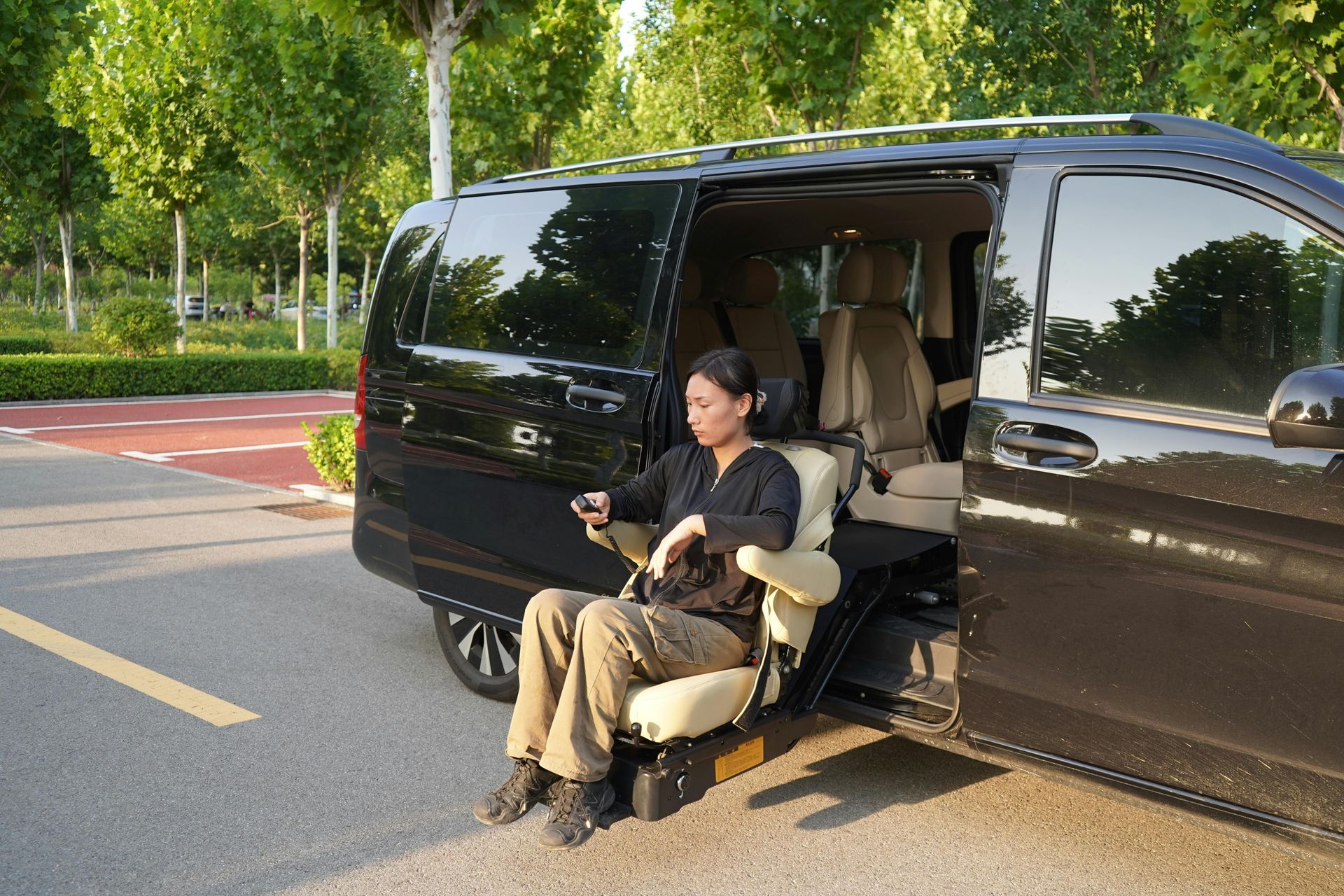
Hey everyone! We're talking about something super important today: how mobility vans are changing for the better by 2025. It's all about making life easier for families in North Georgia and Chattanooga, especially when it comes to getting around. New tech is making these vans way more helpful, and we're going to look at what that means for everyone who uses them. The future of wheelchair vans looks pretty bright, so let's check it out!
Key Takeaways
- New tech like smart ramps and better safety stuff will make mobility vans much easier to use and safer for everyone inside.
- Getting around North Georgia and Chattanooga will be simpler with GPS that knows about accessible routes and real-time traffic updates.
- Electric and hybrid vans mean less money spent on gas and they're better for the planet, which is a win-win.
- Vans will be set up to fit individual needs, with custom seats and good climate control for comfy rides.
- Things like AI for parking and voice controls will make driving and using the van a lot less stressful.
Revolutionizing Accessibility: The Future of Wheelchair Vans
Wheelchair vans are getting a serious upgrade! It's not just about slapping a ramp on a minivan anymore. We're talking about tech that makes life easier and more comfortable for everyone. The changes coming are pretty exciting, and they're going to make a big difference for families in North Georgia and Chattanooga.
Smart Ramps and Automated Entry Systems
Forget struggling with heavy ramps. The future is all about automation. Think ramps that deploy with the touch of a button, doors that open automatically, and even systems that adjust to different surfaces. It's about making entry and exit as smooth as possible. These systems will also include safety features to prevent accidents, like sensors that detect obstructions.
- Remote control operation
- Obstruction detection
- Adjustable ramp angles
Enhanced Interior Space and Configurability
It's not just about fitting a wheelchair; it's about creating a comfortable space for everyone. Expect to see vans with more flexible seating arrangements, allowing families to customize the interior to their specific needs. Seats that can be easily removed or repositioned will become standard, along with increased headroom and legroom.
The goal is to create a space that feels less like a medical transport and more like a family vehicle. This means paying attention to the details, like lighting, storage, and overall design.
Advanced Safety Features for All Passengers
Safety is always a top priority. Future mobility vans will come equipped with a range of advanced safety features, not just for the person in the wheelchair, but for all passengers. This includes things like:
- Advanced driver-assistance systems (ADAS)
- Reinforced wheelchair tie-down systems
- Improved airbag technology
These features will work together to provide a safer and more secure ride for everyone. Inclusive autonomous vehicles will also play a role in enhancing safety by reducing the risk of human error.
Navigating North Georgia and Chattanooga with Ease
GPS Integration for Accessible Routes
Okay, so picture this: you're trying to get around Chattanooga, but you need to find places that are actually accessible. It's not always easy, right? That's where updated GPS comes in. These systems are designed to highlight routes that avoid things like stairs or super steep hills.
Think about it:
- Finding accessible parking spots becomes way simpler.
- You can easily locate ramps and elevators.
- The system can even suggest routes with smoother sidewalks.
Real-Time Traffic and Obstacle Avoidance
Imagine being stuck in traffic, and then realizing the detour route isn't accessible. Major headache! New mobility vans are getting smart about this. They're using real-time data to avoid not just traffic jams, but also unexpected obstacles like construction or accidents that might block accessible pathways. This tech is a game changer for planning trips. It's all about making sure you can get where you need to go without unnecessary stress. The wheelchair van rentals are equipped with the latest GPS.
Community-Driven Mobility Solutions
It's not just about tech; it's about people helping people. In North Georgia and Chattanooga, there's a growing trend of community-driven mobility solutions. This means local groups are working together to map out accessible locations, share information about transportation options, and even provide ride-sharing services specifically for people with mobility challenges.
These initiatives are super important because they fill the gaps that traditional transportation systems often miss. It's about creating a network of support that makes it easier for everyone to get around and participate in community life. Plus, it helps build awareness and understanding of accessibility issues.
Here are some examples:
- Local apps that crowdsource accessibility info.
- Volunteer driver programs.
- Community workshops on accessible transportation options.
Powering Independence: Electric and Hybrid Mobility Vans
Extended Range and Charging Infrastructure
Okay, so electric and hybrid mobility vans are becoming a real thing, and honestly, it's about time. One of the biggest hurdles, though, is range. No one wants to be stuck on the side of the road in North Georgia, especially if you're relying on the van for, well, everything. So, extended range is key. We're talking about vans that can actually handle longer trips without constant charging anxiety.
And then there's the charging infrastructure. It's gotta be more than just a few scattered stations. We need reliable, accessible charging points all over the place – in Chattanooga, up in the mountains, everywhere. Think about it:
- Fast charging options are a must.
- Standardized charging ports would make life so much easier.
- More charging stations at rest stops and public areas.
Reduced Operating Costs for Families
One of the biggest advantages of electric and hybrid mobility vans is the potential for lower operating costs. Gas prices are crazy, and maintenance on a regular van can be a killer. Electric and hybrid models? They cut down on fuel costs big time. Plus, there's usually less maintenance involved – fewer moving parts to break down. It all adds up to some serious savings for families who really need it.
Switching to electric or hybrid can really ease the financial burden. Think about the money saved on gas and oil changes – that can go towards other important things, like therapy or home modifications. It's not just about getting from A to B; it's about making life more manageable.
Environmental Benefits of Green Mobility
Let's be real, we all need to do our part for the environment. And mobility vans? They tend to be gas guzzlers. Switching to electric or hybrid isn't just good for your wallet; it's good for the planet. Less emissions mean cleaner air, which is a win for everyone, especially those with respiratory issues. Plus, it's a statement. It shows that we care about the future and are willing to invest in sustainable solutions. It's a small change that can make a big difference. Here's why:
- Reduced carbon footprint
- Less air pollution
- Quieter operation (less noise pollution)
Personalized Comfort: Tailoring the Mobility Experience
Customizable Seating and Restraint Systems
Mobility vans in 2025 are all about making the ride as comfy as possible. Forget those one-size-fits-all setups. We're talking fully customizable seating. Need extra lumbar support? Done. Want a seat that reclines further? No problem.
- Adjustable headrests for better neck support.
- Integrated massage functions to ease muscle tension.
- Quick-release mechanisms for easy seat removal and reconfiguration.
And it's not just about comfort; it's about safety too. Restraint systems are getting smarter, adapting to different body types and mobility needs.
Climate Control and Air Quality Innovations
Remember those days of battling over the temperature in the car? Those days are over! Future mobility vans will feature advanced climate control systems that allow for individual temperature zones. So, if you like it cool and your co-pilot prefers it warm, everyone wins.
- Smart sensors that monitor air quality and automatically adjust ventilation.
- HEPA filters to remove allergens and pollutants.
- UV-C sanitization systems to kill germs and bacteria.
Think of it as your own personal bubble of fresh, clean air, no matter where you're headed. It's especially important for those with respiratory issues or sensitivities.
Infotainment and Connectivity for Long Journeys
Long drives can be a drag, but not in a 2025 mobility van. We're talking next-level infotainment.
- Integrated streaming services for movies and TV shows.
- High-speed internet access for staying connected on the go.
- Voice-activated controls for hands-free operation.
Plus, these vans are designed to be mobile offices or entertainment centers. With features like built-in charging ports, adjustable lighting, and noise-canceling technology, you can work, relax, or play in total comfort.
The Role of AI and Automation in Future Mobility Vans
AI and automation are set to change mobility vans in a big way. It's not just about making things easier; it's about giving people more independence.
Self-Parking and Automated Maneuvering
Parking can be a real pain, especially with a larger vehicle. Self-parking features will be a game-changer. Imagine a van that can parallel park itself perfectly every time! Automated maneuvering will also help in tight spots, making it easier to navigate crowded areas.
- Easier parking in urban environments
- Reduced stress for drivers
- Increased safety during low-speed maneuvers
Predictive Maintenance and Diagnostics
No one likes unexpected breakdowns. Predictive maintenance uses AI to analyze data from the van and predict when something might go wrong. This means you can get it fixed before it becomes a problem. It's like having a mechanic that's always watching over your vehicle. This will help with collision prediction too.
Voice-Activated Controls for Enhanced Usability
Voice control is becoming more common, and it's perfect for mobility vans.
- Adjusting the temperature
- Changing the radio station
- Operating the ramp
Voice control can make a huge difference, especially for people with limited mobility. It allows drivers and passengers to control various functions without having to reach for buttons or switches. This not only increases convenience but also improves safety by keeping the driver's attention on the road.
Financial Accessibility: Making Mobility Vans Attainable
Innovative Financing and Lease Programs
Mobility vans can be expensive, no doubt about it. But there are some cool ways to make them more affordable. Think about innovative financing options. Instead of just a regular car loan, some companies specialize in loans specifically for adaptive vehicles. These might have better interest rates or longer repayment periods, making things easier on your monthly budget. Lease programs are another option. It's like renting the van for a set period, which can mean lower upfront costs and predictable monthly payments. Plus, you get to upgrade to a newer model when your lease is up!
Government Grants and Assistance Programs
Did you know that the government actually wants to help people get the mobility equipment they need? It's true! There are various government grants and assistance programs out there designed to offset the cost of mobility vans and adaptive equipment. These programs can be a lifesaver, especially for families on a tight budget. The application process can be a bit of a hassle, but it's definitely worth exploring.
Here are some things to keep in mind:
- Eligibility requirements vary by program.
- The amount of assistance you can receive depends on your income and needs.
- Be prepared to provide documentation, such as proof of disability and income statements.
Insurance Coverage for Adaptive Technologies
Okay, so you've got the van, but what about insurance? Making sure your insurance covers the adaptive equipment is super important. You don't want to be stuck with a huge bill if something breaks down or gets damaged. Talk to your insurance company about adding a rider to your policy that specifically covers the wheelchair lift, ramp, or other modifications. It might cost a little extra each month, but it's worth it for the peace of mind.
It's important to shop around and compare quotes from different insurance companies to find the best coverage at the most affordable price. Don't be afraid to ask questions and make sure you understand exactly what is and isn't covered under your policy.
Here are some things to consider when looking at insurance:
- What is the deductible for adaptive equipment repairs?
- Does the policy cover the cost of a rental van while yours is being repaired?
- Are there any limitations on the types of adaptive equipment that are covered?
Beyond Transportation: Mobility Vans as Lifestyle Enablers
Mobility vans are becoming so much more than just a way to get from point A to point B. They're really opening up new possibilities for people and their families. It's about making life easier and more fulfilling, not just dealing with transportation challenges.
Facilitating Social Engagement and Community Participation
It's easy to feel isolated when getting around is difficult. Mobility vans can change that. They make it easier to attend social events, visit friends and family, and participate in community activities.
- Attending local festivals and concerts.
- Joining clubs and support groups.
- Volunteering for causes you care about.
Enabling Educational and Employment Opportunities
Having reliable transportation can make a huge difference in accessing education and jobs. It's about independence and opportunity.
- Getting to college classes or vocational training.
- Commuting to work without relying on others.
- Attending job interviews and networking events.
Supporting Recreational Activities and Family Adventures
Mobility vans are making it easier for families to enjoy time together. Recreational activities wheelchair accessible vehicle conversion costs are now more accessible.
- Visiting national parks and historical sites.
- Going camping or fishing.
- Attending sporting events and concerts.
Mobility vans are not just about overcoming physical limitations; they're about expanding horizons and creating opportunities for a richer, more connected life. They empower individuals to pursue their passions, engage with their communities, and enjoy quality time with loved ones, ultimately transforming the way they experience the world.
Mobility vans are more than just a ride; they open up a world of possibilities, letting you live life to the fullest. They help people get out and do what they love, making everyday adventures and special trips much easier. Want to see how a mobility van can change your life? Visit our website today to learn more!
Conclusion
So, as we look ahead to 2025, it's pretty clear that mobility vans are going to keep getting better. New tech is really changing things for families in North Georgia and Chattanooga. It's not just about getting from one place to another anymore. It's about making those trips easier and more comfortable for everyone. Think about it: less stress, more freedom. That's a big deal for folks who rely on these vans. It means more family outings, easier doctor visits, and just generally more independence. The future looks bright for mobility, and that's good news for a lot of people.
Frequently Asked Questions
How will new technology make it easier to get in and out of mobility vans?
These new vans will have cool features like smart ramps that make it super easy to get in and out, even for people using wheelchairs. They'll also have more space inside and can be set up in different ways to fit everyone comfortably.
Will these vans help me find easier ways to get around North Georgia and Chattanooga?
Yes! Future vans will use GPS to find the best routes that are easy for everyone to travel, avoiding tricky spots. They'll also tell you about traffic or things in the road so you can have a smooth trip.
What are the benefits of electric and hybrid mobility vans?
Absolutely! Electric and hybrid vans will go further on a single charge or tank of gas, saving families money on fuel. Plus, they're better for the environment because they produce less pollution.
Can I customize the inside of these new mobility vans to make them more comfortable?
You bet! You'll be able to pick out seating that fits your needs perfectly, control the temperature just how you like it, and even have entertainment and internet for long drives to keep everyone happy.
How will smart computer systems (AI) make driving easier?
AI will help with things like parking the van for you and telling you when it needs maintenance before something breaks. You'll even be able to control some features with your voice, making everything simpler to use.
How will families be able to afford these advanced mobility vans?
There will be new ways to pay for these vans, like special payment plans or renting them. Also, the government might have programs to help families afford them, and insurance could cover some of the special equipment.

